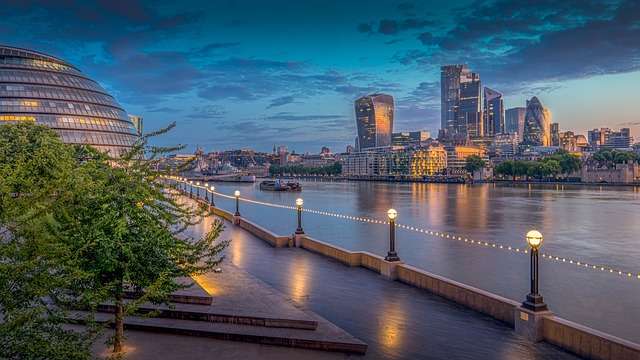
Amidst the hum of its vibrant street life and the constant evolution of its historic landscape, London is witnessing a silent revolution that is reshaping its skyline. The impetus for this transformation is not the pursuit of soaring heights or futuristic designs, but the city’s embrace of sustainability. This concept has taken root in the heart of the metropolis, influencing modern construction and redefining the architectural legacy of one of the world’s premier cities. The catalyst for this change is the Building Research Establishment Environmental Assessment Method, widely known as BREEAM, which has come to symbolise environmental excellence in the building industry.
BREEAM stands at the forefront of sustainable construction, offering a multi-faceted framework that seamlessly integrates eco-friendly principles into the entire lifecycle of building design and development. It is in the pre-assessment phase, however, that the true transformative power of BREEAM is unleashed. This strategic phase acts as a blueprint, embedding sustainability into the project from its inception, streamlining the construction process, and ensuring the environmental impact is meticulously considered from the outset.
The quest for BREEAM certification is more than an endeavour to earn a prestigious symbol of environmental consciousness; it is an assurance of a building’s compliance with some of the industry’s most stringent ecological standards. While not a legal requirement, BREEAM certification is a sought-after marker of a project’s commitment to minimising its carbon footprint, and to standing out to environmentally minded investors and customers. The benefits of certification are multifaceted, promising not just a reduction in operational costs but also boosting a building’s marketability—a significant advantage in London’s competitive landscape.
The journey to achieving BREEAM certification presents a challenging endeavour. Architects and qualified assessors are thus indispensable in this process. With their expert knowledge in sustainable design, architects ensure that buildings not only meet the necessary requirements but also break new ground in environmental innovation. Assessors, meanwhile, navigate the complex terrain of sustainable construction, guiding projects to meet BREEAM’s rigorous standards and ensuring these standards are integrated into the very fabric of the building design.
The pre-assessment’s holistic approach stands out, taking into account the project’s impact on the environment, economy, and society. It strikes a balance between cost-effectiveness and sustainability, fostering not just economic resilience but also a proactive stance in construction practices. Recognising the value of this methodology, local authorities in London are advocating for BREEAM pre-assessment, acknowledging its alignment with the city’s ambitious environmental objectives and its ability to elevate the corporate reputation of developers.
The pre-assessment process itself is a detailed exercise, requiring the gathering of early-stage data on factors such as air quality and indoor environment, which are pivotal in endorsing occupant health and achieving sustainability benchmarks. Thermal modelling plays a crucial role, forecasting a building’s energy needs and emissions, and contributing to its environmental credentials.
Achieving a superior BREEAM rating yields concrete rewards. Beyond the commendation for environmental stewardship, it can result in lower running costs, greater appeal to investors and tenants, and adherence to the dynamic landscape of regulatory standards. This accolade also attests to a project’s rigorous application of sustainable practices, solidifying its standing with all stakeholders and meeting the thresholds for environmental distinction.
The influence of BREEAM pre-assessment on London’s sustainable construction is considerable. By instilling a culture of sustainability from the beginning of a project, BREEAM is not merely directing informed decision-making and fostering innovation—it is establishing the foundation for a future where eco-friendly buildings are the norm. This strategic method ensures that projects are aligned with current sustainability goals and are prepared for future environmental challenges.
As London confronts the implications of urban expansion, the importance of comprehending and applying BREEAM criteria becomes ever more critical. Developers, architects, and contractors are recognising that the integration of sustainability from the project’s inception is not simply advantageous—it is imperative for forging a robust urban fabric. This movement is crafting a legacy of green architecture that will epitomise the city’s devotion to a sustainable future.
The BREEAM pre-assessment process is steering the course of sustainable construction in London towards a path of environmental accountability that will echo through future generations. By prioritising sustainability from the beginning, BREEAM pre-assessment ensures that London’s development projects not only comply with the demanding requirements of today’s ecological standards but are also primed to confront the challenges of tomorrow. In this commitment to green building principles, London is not just erecting structures; it is crafting an enduring legacy of sustainability that will stand as a testament to responsible development for years to come.


Be the first to comment